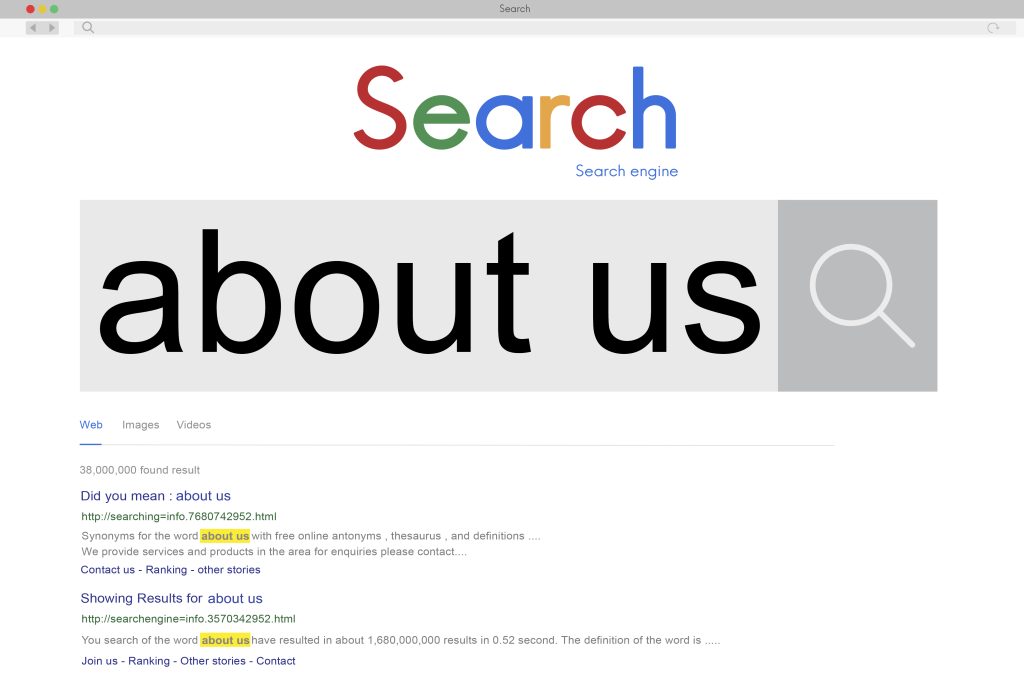Introduction
A 2020 report says that the number of searches on Google on one day is more than 7 billion. These searches made by Google’s users involve some words that are typed to put in the query. These words are called keywords. As a business, you can research those keywords that are mainly used by your target audience while searching for their queries. Every business has its own set of keywords related to its offerings and the process of finding such words is called keyword research. In a world where every business and even individuals have their websites, there is fierce competition to rank one’s website on the first page of Google or any other search engine. Thus, keyword research is a very important pillar for Search Engine Optimisation because Google ranks those websites on its first page that contain the keywords used by people in their search queries.

If a user uses certain keywords in their search query and your webpage’s content is relevant, i.e., contains those keywords in the right quantity and manner, there’s a good chance your page will show up on the first page of search results. Basically, if you want your target audience to discover you, you need to understand the exact words they’re typing into search engines. What is the need for keyword research or search engine optimisation? These two terms pave the way for your target audience to find you, helping you enhance your website traffic and your potential customers.
Understanding the keywords: The Basics
Types of keywords: Based on the length
- Seed keywords:
The keyword game starts when you sow a seed of a generic keyword related to your business. The keyword research starts with a seed keyword. For example – Digital Marketing is a seed keyword from which other keywords of this niche can be developed. - Short-tail keywords:
As the name suggests, these are short keywords with a word limit of two to three words maximum. Since they are short and general, there is a huge competition among businesses to rank for such keywords. For example, Digital marketing course or Digital marketing services, both of these are short-tail keywords and have high competition and are difficult to rank for. - Long-tail keywords:
As the name defines, these keywords are longer having a total of three to five words. Since these keywords represent a clearer intent, the keyword research shows that it is easy to rank on these keywords as they are relatively less competitive. For example, Digital Marketing Institute near me. - LSI keywords:
Latent Semantic Keywords are terms that are not directly related to the main keywords, but if typed in the search query, there are chances of the main keyword webpages appearing in the search engine results page. These keywords are basically those that are similar to the main keywords in their meaning.
Types of keywords: Based on the intent

- Informational keywords:
These keywords are for providing information or knowledge about topics where questions like What, Why, and How are answered. They are less likely to make a purchase, but the usage of these keywords indicates that the businesses can build brand awareness if their webpage shows up in the search engine results page. - Navigational keywords:
These keywords denote some clarity on a user’s intent, where they find a particular platform or website. They have more clarity in terms of their requirement, and they start reaching the middle of the marketing funnel. For example, Facebook or Amazon, etc. Here, the brand or platform they search for has already built the required awareness in the user’s mind. - Commercial keywords:
These keywords are those where the searchers research and compare brands. They go through listicles, product reviews, and different articles to plan on their purchase. When using these keywords, searchers are considered to be in the middle of the funnel yet closer to making their decision on the purchase. - Transactional keywords:
These keywords as per the name are where searchers want to complete an action or make a purchase. When people use these keywords, they’re usually ready to make a purchase as these terms are more specific and clearly reflect what the searcher wants. In this case, the set of keywords contain words like ‘Buy’ or are highly specific to what is required.
Why keyword research matters for your website?

- To understand your audience better:
When you research your niche-related keywords, you gain a deeper understanding of your audience’s needs and wants. This helps you build content around your product in such a way that aligns with the requirements of your target audience and helps you generate more traffic and quality prospects. - To understand the competitor landscape:
This process of keyword research not only gives you insights into your audience’s behavior but also how your competitors play in the market. To ensure you get an equal amount of space and customers in the market, you must evaluate keywords on which you can rank and become a top choice among your audience. - To get new content writing ideas:
Keyword research helps you gain inspiration and generate new ideas for creating content on your website. With variety of content on your website, you’re able to compete in the market and also tap into new areas where there is low or negligible competition. - To enhance visibility among target audience:
When you research for keywords and start using them in your webpages in an optimised manner, your SEO game starts to strengthen which ultimately brings your website to your audience. When your webpage or brand reaches your target customers, you get closer to achieving your end goal of customer acquisition. - To stay competitive in the long run:
Keyword research helps you in search engine optimisation where if your website starts ranking and follows Google algorithms, you can get high ROI on this investment of researching keywords. This ROI makes you competitive in the long run strengthening your position in the market as a competitor.
Keyword Research Tools
Free tools Paid tools
Google Keyword Planner Ahref’s
Semrush
Moz Keyword Explorer
Ubersuggest
How to find the right keywords?
- Create a keyword list:
The very step is to create a list of keywords that you can rank for. At this stage, you don’t need to stress about who else is competing. This list will help you put your list of keywords into different categories based on their length and user intent. You can create this list using the keyword research tools mentioned above. - Find keywords with low competition:
After categorising your keywords, find those keywords that are less competitive for example: the long tail keywords have low competition and are easy to rank for. The above-mentioned keyword research tools display a metric that is known as ‘Keyword Difficulty’; this metric allows us to see the ranking difficulty based on how competitive the market is. This comparison helps you spot keywords your competitors aren’t using, making them easier for you to rank for. - Check search volume:
Once you have identified keywords with low competition, it is important to check if those keywords are really being used by users in their search queries. The above-mentioned keyword tools also display another metric called ‘Search Volume’ that tells about the volume of searches made using that keyword. This metric gives you insights into the kind of keywords that users use to type in their queries. - Evaluate the keyword’s earning potential:
After identifying keywords that are less competitive and have a good search volume, you need to think about the end goal, i.e. to earn from your users. The keywords that you use should also carry purchase intent for your users, so they end up buying your product. The keywords like buy iPhone 13 or Minimalist Sunscreen SPF 50 etc, are keywords that can check all your boxes of the deciding factors. - Check organic clicks:
If your keyword’s search volume is good, you’ve made a great choice. However, it is also important to see if those keywords are getting an equal amount clicks because it’s only then, this keyword research process and its outcome can turn out to be fruitful for you. The ‘Click-Through-Rate’ is also an important metric to assess a keyword along with its search volume. - Identify trending keywords in your list:
To let your keyword check all the boxes of factors and metrics mentioned above, you can choose trending keywords for your webpage which increases the chances of them being used in search queries. Trending keywords are those that the audience is using the most at a particular time and using such keywords helps you optimise your webpage faster, enhancing your ranking.
Keyword metrics you should know

- Search volume
Just like it sounds, search volume refers to how many times, on average, a keyword gets searched. It denotes how often a particular keyword is used by the users for searching related to your niche. Using keywords with high search volume indicates the potential of high traffic on your website thus, supporting you with your end goal of sales. - Keyword difficulty
If we go by the name again, this metric talks about how difficult it is to target and rank on a particular keyword. This difficulty is mainly considered due to the competitive landscape of that niche. - Search intent
Apart from the above two metrics, it is important to identify if your target audience is actually using those keywords to search for their requirements. This metric is a big deciding factor for targeting any keyword as it reveals the need or intention of the search.
How to use keywords the right way?

After you have finalised your keywords basis the metrics and other important factors, it is time to incorporate them strategically into your webpage so that search engine’s algortihms and user’s intent well aligns with your content. Below-mentioned are places and positions where keyword placement can be highly beneficial for ranking:
- Page title: This is the main heading that describes the content covered in a smaller number of words and appears on the browser tab.
- Page URL: This is a unique address for a webpage that locates the particular content being searched.
- Headings and Subheadings: The main topic of the content of a webpage is called heading, also known as ‘H1’ and subheadings are the sub-topics of the main heading that are marked from ‘H2 – H6’
- Body content: The content that you mention below the headings and subheadings forms the body of your content.
- Meta descriptions: This is a short summary of your webpage that shows up under the title in search engine results, giving people a quick idea of what your page is about.
- Image alt text: This is a short descriptive text for an image to make it easy for search engines to understand those images.
FAQs
- How many keywords should I target per page?
For high chances of ranking, you should target one main keyword (be it long or short) with two to five secondary keywords or related keywords per page. - How often should I update my keyword strategy?
Since search engines also have updates in their algorithms time to time, it is advised to update your keyword strategy every three to six months. - What’s the difference between organic and paid keywords?
Paid keywords are those where one bids to appear in the sponsored ads and organic keywords are those that are generated during keyword research where you optimise your website for ranking.
Conclusion
In conclusion, your keyword research builds the foundation for your website’s ranking. In the long run, it is advisable to use paid keywords in the short run to enhance your ranking initially and use organic keywords for ranking. In organic keywords, long-tail keywords are less competitive and have high chances of ranking; however, they can generate a limited amount of audience. When using short-tail keywords, there is competition but high chances of ranking. Therefore, it is not just necessary to use long-tail keywords but also short-tail keywords in a strategic way. When your keywords are incorporated at the right places on a webpage, you have a high chance of maintaining your ranking in the search engine results page. It is also essential to manage keyword density, that is, the number of keywords you insert on one page as adding keywords beyond the suggested limit can affect your ranking in the opposite way.